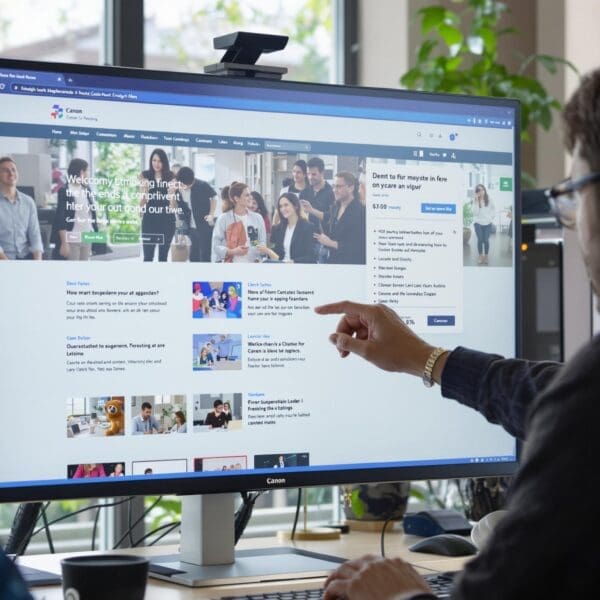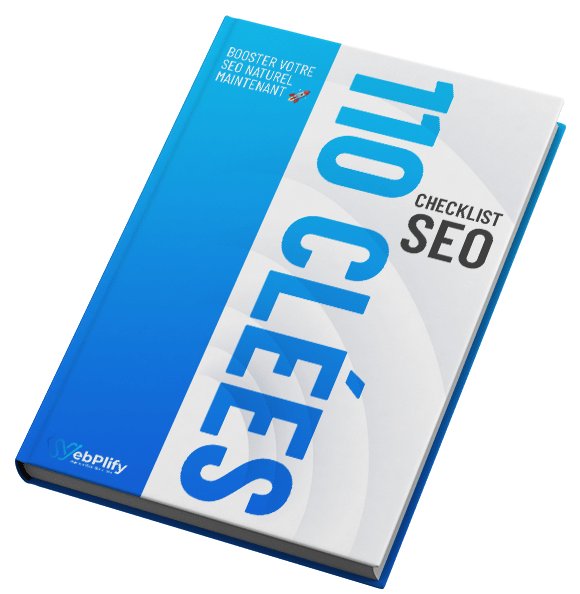Do you dream of seeing your site catapulted to the top of Google results, but for you, SEO seems like a never-ending journey fraught with pitfalls? CTR manipulation, a sometimes disparaged SEO practice, promises you wonders by artificially inflating your click-through rate. This article examines the method, how it works and its potential dangers, while exploring more virtuous solutions for improving your positioning and boosting your online visibility.
Table of contents
ToggleUnderstanding CTR manipulation
Definition and key mechanisms
CTR, or click-through rate, remains a key indicator: percentage of clicks after having seen it.
- Intensive manual clicks: This technique consists in artificially increasing the number of clicks. This is achieved by multiplying repeated searches and clicking on a targeted link. The aim is to mimic genuine interest. This maneuver is intended to influence the algorithms and indicate that the page is relevant to the query.
- Click farms: We’re talking here about using small-scale services or click farms. The aim? Generate clicks on a web page from different IP addresses and locations. These services attempt to simulate human behavior, since they involve humans rather than robots.
- Bots and automated software: Bots are used to simulate clicks on a web page. Often accompanied by proxies to disguise the origin. These tools can generate a large number of clicks quickly… but they’re more likely to be spotted by search engines.
- SERP manipulation: This method involves implementing techniques to influence the display of search results. For example, optimizing metadata and descriptions can attract more clicks. Although this method is closer to SEO optimization, it can be used in a manipulative way to artificially inflate CTR.
- Call-to-click: This approach seeks to encourage users to click on a link. This is achieved by using racy headlines or misleading descriptions. The aim is to increase the number of visitors to a web page. This method can amount to manipulation if it misleads users.
In short, these strategies aim to play with search engine algorithms by simulating organic interest. It’s important to note, however, that these strategies are not without risk and may be considered questionable.
It’s crucial to differentiate good CTR optimization practices from manipulative techniques, which can border on dark patterns transposed to SEO. CTR manipulation is an SEO practice where clicks are artificially generated to a website. Although this technique can indeed boost rankings, it is frowned upon by Google.
History and evolution of practices
Endless race against search engine algorithms.
The effect of algorithmic updates on the effectiveness of manipulations sheds new light on current risks. While Google is stepping up its hunt against spam with the deployment of SpamBrain, search engines are dismantling these processes and placing greater emphasis on the quality and reliability of sources.
SEO impact and associated risks
Examination of theshort-term effectiveness of CTR manipulation on positioning nuances the apparent benefits.
| Aspect | Risks | Benefits (short-term) |
|---|---|---|
| Google penalties | Algorithmic (downgrading, de-indexing) when unnatural click patterns are detected. | Rapid improvement of visibility on targeted keywords. |
| Traffic quality | Unqualified traffic from non-targeted regions, high bounce rate, low conversion. | Artificial increase in clicks (CTR) and potential improvement in positioning. |
| Detection | Search engines track unnatural click patterns and traffic anomalies. SpamBrain, an AI system from Google, detects and neutralizes these manipulations. | Influence on user signals, crucial data for Google in ranking sites. |
| Durability | Gains are often temporary and can be reversed by Google. After a few weeks, or even days, positions return to their base level. | Possibility of improving behavioral engagement metrics such as page view times. |
| Cost | High cost of obtaining clicks, especially for competitive keywords. Investment sometimes lost in the event of a penalty. | Can improve competitiveness in less saturated keyword niches. |
| Impact on users | Falsification of search results, preventing users from finding the information they are looking for. | No direct benefit for users. |
| Legend: This table compares the risks and benefits associated with CTR manipulation, highlighting the importance of adopting ethical and sustainable SEO strategies. | ||
Some studies suggest that CTR manipulation can temporarily improve local rankings, but these gains generally evaporate in the long term. CTR manipulation remains a risky, “black hat” technique, as its effects are difficult to sustain. Case studies of recent Google penalties clearly demonstrate the risks involved. Remember that Google can penalize sites that use CTR manipulation techniques.
Methods and tools used
Manual techniques
The use of micro-workers and click farms gives us a good insight into human processes.
To fully understand manual manipulation techniques, here’s how they work and what their limits are. In concrete terms, we present how these techniques rely on human intervention to influence search results.
- Micro-worker recruitment: Companies hire individuals via micro-worker platforms to perform specific searches and click on their links in SERPs. These micro-workers are paid on a per-click basis – creating a financial incentive to manipulate results.
- Simulation of human behavior: Micro-workers are often trained to faithfully reproduce natural browsing behavior: scrolling down the page, spending a certain amount of time on the site and visiting several pages. This simulation aims to make clicks look more authentic in the eyes of search engine algorithms.
- Use of proxies and VPNs: In order to hide their IP addresses and avoid detection, micro workers often use proxies or virtual private networks (VPNs). This makes it more difficult for search engines to trace the origin of clicks and identify abnormal behavior.
- Coordination of clicks: Specialized services often coordinate the actions of several micro-workers to generate traffic peaks over short periods, which can attract the attention of search engines. This coordination aims to amplify the effects of the manipulation on the site’s ranking.
- Bypassing geographical boundaries: Companies can target micro workers located in specific regions to mimic traffic from their targeted geographical area. This can help improve the site’s ranking in local search results.
In summary, manual techniques for manipulating click-through rates rely on the use of micro-workers to reproduce natural browsing behavior. However, they have their limits in terms of cost, quality and risk of detection.
Geographical constraints and qualitative issues underline the weaknesses of these methods, as a significant proportion of clicks may come from regions that do not correspond to the target geographical area, distorting the analysis data and diminishing the quality of the traffic generated.
Automation and software
The use of bots and proxy systems allows us tounderstand the technical aspects of manipulation.
The constant evolution of anti-detection tools reveals a veritable technological arms race. Search engines are improving their detection of click-rate manipulation by scrutinizing click patterns and identifying anomalies that betray non-organic activity, and the techniques are constantly evolving.
Hybrid strategies
The combination of artificial clicks and best practices reveals questionable practices.
Analysis of the results over the medium term suggests that we should remain cautious about cumulative effects. Manipulation of the click-through rate strategy operates by acting on user indicators, which are important data for Google in ranking sites.
Costs and profitability
Comparing the cost budgets generated by the different methods helps to measure the financial impact of the manipulation.
Long-term cost/benefit analysis reveals the danger of financial waste, as manipulating click-through rates, like all black hat techniques, exposes you to penalties from Google, particularly if repeated.
Legal and ethical aspects
Current regulations
The legal framework concerning manipulation practices in Europe is built around legal status. Even if there is no law specifically targeting CTR manipulation, it could contravene search engine terms of use.
Clearly, search engines have little tolerance for CTR manipulation, as it artificially alters results and deteriorates the user experience. It should be noted, however, that varying interpretations complicate legal situations.
Debate in the SEO community
The position of digital marketing experts highlights divergent opinions. Most digital marketing professionals strongly advise against these CTR manipulation techniques. Often referred to as “black hat SEO” practices.
Many companies have publicly denounced these methods and are firmly committed to banning them. They prefer responsible digital marketing strategies that respect users. Here are a few concrete examples of such rejection.
Impact on the digital ecosystem
Unfortunately, CTR manipulation has a negative impact on Internet users. It dangerously distorts search results and too often prevents them from finding the information they’re looking for. In concrete terms, this has an impact on the quality of search results.
CTR manipulation holds insidious dangers for the web, since it can lead to a progressive impoverishment of the quality of results – and by extension – an erosion of trust in search engines. It’s crucial to point out the societal implications.
Ethical alternatives
Fortunately, there are authorized CTR optimization techniques available, and they really do boost click-through rates in an ethical and sustainable way. These authorized CTR optimization methods offer legitimate alternatives.
To adopt an ethical and sustainable approach to SEO, check out our comprehensive guide to White Hat SEO. The methods generating the most stable results are those based on a sustainable and ethical approach to SEO. Benchmarking shows that sustainable results are actively encouraged.
Future and prospects
Technological innovations
New AI-based detection solutions are sometimes faster than algorithms. Google, for example, refines its detection of CTR manipulation by analyzing click patterns and detecting suspicious behavior – a detection that gains in accuracy.
The constant evolution of the tools to be circumvented raises questions about their durability. The ability of software to circumvent protections against CTR manipulation is a never-ending race, it must be said, between software creators and search platforms, but this ongoing battle raises questions about the future viability of these processes.
Market trends
The evolution of demand for CTR manipulation services enables us to analyze changes in the sector. It should be noted that the market for CTR manipulation services is difficult to assess precisely, as it is often opaque, making it difficult to analyze.
The impact of new regulations on the existing offer helps to predict future upheavals. The future of CTR manipulation service providers depends on their ability to adapt to the increasingly stringent controls imposed by the search giants. In the face of this tightening, adaptation becomes crucial and represents a key challenge for these players, who are forced to innovate in order to survive in an increasingly restrictive context.
As tempting as it may be to manipulate CTR to boost a site quickly, it’s not without danger. Instead, opt for a responsible, sustainable SEO approach, because your digital credibility and the trust of your users depend on it. Remember that sustainability always takes precedence over flash results, an apparent success that could well backfire if the foundations lack robustness and integrity.
Questions about CTR manipulation (FAQ)
What is the target ctr for a sound seo strategy?
There’s no magic number for an ideal CTR. In fact, many internal and external factors influence the click-through rate. A good CTR is important because it attracts more traffic – users perceiving the content as relevant and useful.
Internal factors include a catchy title, a powerful meta-description and attractive visual elements. External factors include organic position on Google, industry and seasonality. It’s important to monitor CTR and continually optimize titles and descriptions to attract more organic traffic (it’s a constant work in progress).
How to analyze the impact of an artificially boosted ctr?
Analyzing the impact of an artificially boosted CTR requires a methodical approach. Anomalies must be detected and potential SEO consequences assessed. Given the need to understand visitor behavior and interactions with the site, it’s important to carefully examine navigation data.
Compare the CTR obtained with the average click-through rates expected for each position in the search results. An abnormally high CTR for a given position may indicate manipulation. Watch out for repetitive or automated click patterns, as these may be generated by bots or click farms.
What are the indicators of a manipulated ctr?
CTR manipulation consists in artificially increasing the number of clicks on a URL in search results. There are several indicators of CTR manipulation – including traffic anomalies.
A significant discrepancy between click-through rate, bounce rate and conversion rate can alert search engines. Similarly, clicks from irrelevant sources or sudden, inexplicable variations in CTR can be suspicious.
How to optimize your ctr naturally and sustainably?
To optimize your CTR naturally and sustainably, it’s important to focus on several key aspects of SEO and digital marketing. Create catchy, relevant titles and meta descriptions that entice users to click.
Use rich snippets and structured data to make your search results more attractive. Create high-quality, duplicate-free content that focuses on users’ needs. Use Google Search Console to track and optimize your CTR in organic results.
Does a high ctr guarantee good positioning on google?
A high CTR indicates that users consider ads and listings to be useful and relevant. CTR also contributes to the expected CTR of keywords, which is taken into account in ad ranking.
However, CTR manipulation, which consists of artificially increasing the number of clicks on a URL, is a risky practice. While it may temporarily improve rankings, it can lead to search engine penalties if detected.
What tools can be used to track the evolution of your ctr?
Programmatic SEO (pSEO) adapts to different CMS, exploiting the features each offers for SEO. Each CMS, such as WordPress (WooCommerce), Shopify or PrestaShop, has specific features that influence the way pSEO is implemented. For WooCommerce, SEO plugins such as SEOKEY allow you to manage metadata, sitemaps and other fundamental SEO configurations.
In general, adapting pSEO to a CMS involves using plugins or integrated features to optimize key SEO elements such as metadata, URLs, sitemaps and loading speed. Compatibility with analytics tools such as Google Analytics and Google Search Console is also essential, as each CMS has its own advantages and disadvantages in terms of SEO optimization, and pSEO must be adapted accordingly.















